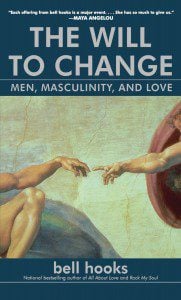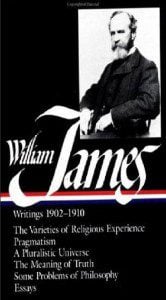9:1 Concerning the Eucharist, give thanks this way. 2 First, concerning the cup: We thank you, God, for
the holy vine of David your servant, which you made known to us through Jesus your servant. To you be the glory forever. Next, concerning the broken bread: We thank you, our Father, for the life and knowledge which you made known to us through Jesus your servant. To you be the glory forever. 9:4 Even as this broken bread was scattered over the hills, and was gathered together and became one, so let your church be gathered together from the ends of the earth into your kingdom. To you is the glory and the power through Jesus Christ forever.9:5 Allow no one to eat or drink of your Eucharist, unless they have been baptized in the name of the Lord. For concerning this, the Lord has said, “Do not give what is holy to dogs.” 10:1 After the Eucharist when you are filled, give thanks this way: 10:2 We thank you, holy God, for your holy name which you enshrined in our hearts, and for the knowledge and faith and immortality that you made known to us through Jesus your servant. To you be the glory forever. 10:3 You, Master Almighty, have created all things for your name’s sake. You gave food and drink to all people for enjoyment, that they might give thanks to you; but to us you freely give spiritual food and drink and life eternal through Jesus, your servant. 10:4 Before all things we thank you because you are mighty. To you be the glory forever. 10:5 Remember, Lord, your church. Deliver it from all evil and make it perfect in your love, and gather it from the four winds sanctified for your kingdom which you have prepared for it. For Yours is the power and the glory forever. 10:6 Let grace come, and let this world pass away! Hosanna to the Son of David! If anyone is holy, let him come; if anyone is not holy, let him repent. Maranatha! Amen. 10:7 But permit the prophets to make thanksgiving as much as they desire.
Didache 9-10
This post is the fourth in a six-part series on the ancient Christian document called the Didache (usually pronounced Did-ah-Kay). Part of the Didache’s significance is that it helps us trace some of the earliest ways that the radical, itinerant peasant lifestyle of Jesus was adapted for the duties and concerns “of family, of occupation, of home — the very things that Jesus and his wandering apostles had left behind.”
We are skipping the three short verses that comprise chapter eight of the Didache on fasting and prayers, partially because the recommended prayer is the Lord’s Prayer, which we have recently studied line-by-line. However, Didache 8:3 is noteworthy for its insistence to “Pray this three times each day.” We Christians, indeed, might find ourselves transformed if more of us paused to pray the prayer of Jesus three times a day: upon waking, at midday, and before falling asleep. Such a spiritual practice could also give us a taste of the formative Islamic practice of praying five times each day.
In contrast to the brief three verses of chapter eight on fasting and prayer (or the brief four-verse chapter on baptism we explored last week), chapters 9-10 on Communion are the second-longest section in the Didache, with the longest being the opening six chapters on the “Way of Life” and the “Way of Death.”
Didache 9:1 says, “Concerning the Eucharist, give thanks this way.” This opening line seems like a fairly straightforward for a church instruction manual, which the Didache is in many senses. But in the second verse we see a surprise, at least from our twenty-first century perspective. We read, “First, concerning the cup.” That order is precisely the opposite to which most of us are accustomed. Isn’t the breaking of the bread supposed to come first at Communion? Not according to the Didache.
However, if you read chapter 22 of The Gospel of Luke closely, you’ll notice that Luke also contains an alternative order. In Luke 22:17, Jesus begins the meal by giving thanks over a cup and inviting the disciples to all share of it. Only then does he takes bread, bless it, break it, and pass it to the gathered disciples. Finally, after a meal, he again takes a cup and says words over it.
But the Didache is even more different different than this description. There is no mention of the wine in the cup being symbolic of Jesus’ blood. Instead, the Eucharistic script instructs the celebrant to the following words over the cup at Communion: “We thank you, God, for the holy vine of David your servant, which you made known to us through Jesus your servant. To you be the glory forever.”
We are seeing an example of the immense diversity of early Christian communion liturgies in the words the Didache. Similarly, over the bread, we are instructed to say a prayer that is quite distinct from the one found in Paul or the canonical Gospels: “We thank you, God, for the life and knowledge which you made known to us through Jesus your servant. To you be the glory forever. Even as this broken bread was scattered over the hills, and was gathered together and became one, so let your church be gathered together from the ends of the earth into your kingdom. To you is the glory and the power through Jesus Christ forever.”
The final verse in our reading for this morning was Didache 10:7, which takes this diverse picture ever further: “But permit the prophets to make thanksgiving as much as they desire.” In other words, prophets could craft their own unique words of prayerful thanksgiving over the cup and bread as the Spirit led them.
Our reading also includes another longer prayer that celebrants are instructed to pray after Eucharist, which includes not only the sharing of a cup of wine and loaf of bread, but also a full meal, which likely would have been similar to what we call a potluck dinner. We read in Didache 10:1, “After the Eucharist when you are filled, give thanks this way….” Notice that phrase, “when you are filled.” I’ve never met anyone who was filled after a sip of wine and morsel of bread. But I have met many people who have been filled (or overfull) after a church potluck.
One of the most valuable parts of early Christian documents like the Didache is that our unfamiliarity with them can give us “eyes to see” details we might otherwise miss. It can, for example, be much easier to notice that the cup comes before the bread in the Didache because we do not have preconceived notions about what the Didache is “supposed to say.” In contrast, it can be much harder for us to notice that the cup also comes before the bread in the Gospel of Luke because we think we know what the Gospel of Luke says before we read it. We assume that Luke supports the way of practicing Communion to which we are most accustomed. And we can miss what the text in front of us says.
For another case in point, let’s turn to 1 Corinthians 11, which is probably the part of scripture that has most shaped the form of Communion to which most of us are used to. A small section of Paul’s letter to the church at Corinth, known as the “Words of Institution,” were the only words spoken at the Communion table of my childhood church. They were always said verbatim, from memory, and from the New King James Version:
the Lord Jesus on the same night in which He was betrayed took bread; 24 and when He had given thanks, He broke it and said, “Take, eat; this is My body which is broken for you; do this in remembrance of Me.” 25 In the same manner He also took the cup after supper, saying, “This cup is the new covenant in My blood. This do, as often as you drink it, in remembrance of Me.” For as often as you eat this bread and drink this cup, you proclaim the Lord’s death till He comes.
Before extensive study and research, I somewhat unreflectively thought that these words needed to be said for a meal to be authentically “Communion” as Jesus intended. Without these “Words of Institution,” I was unsure if Communion had been legitimately instituted. I had unconsciously imbued these words with almost magical power like an incantation.
I will confess to feeling anxiety as a seminarian the first time I served as a guest preacher at a church and was charged with presiding at the Communion. There was no room at this particular small and crowded Communion Table for me to place a script for the traditional “Words of Institution,” and I was worried that I would not say the words with exact precision. I failed to consider that unless I said the words in Greek (or perhaps an Aramaic reconstruction), then I would, at minimum, be saying a translated version of Paul’s or Jesus’ words.
I invite you to notice the three verse that immediately precede the traditional “Words of Institution”:
20 When you come together, it is not really to eat the Lord’s supper. 21 For when the time comes to eat, each of you goes ahead with your own supper, and one goes hungry and another becomes drunk. 22 What! Do you not have homes to eat and drink in? Or do you show contempt for the church of God and humiliate those who have nothing? What should I say to you? Should I commend you? In this matter I do not commend you!
As I studied the entirety of 1 Corinthians 11 slowly and thoroughly, certain words in Paul’s letter to the Corinthians to which I had never previously paid attention began to leap out at me as if they were written in blazing neon lights. In verse 20, Paul refers to “the Lord’s supper,” which is the name for Communion I heard almost exclusively as a child. Unexpectedly the word supper began to stand out to me as if it were written in bold-faced type.
I began to realize that as a child I assumed that, “The Lord’s Supper” was and always had been a ritualized meal consisting of a small plastic cup of grape juice and a small pellet of unleavened bread. If I had been served an ounce of drink and a crumb of bread at the table at my house for “supper time,” I would have balked that, “This isn’t supper; it’s not even a snack!” I somehow unquestioningly accepted throughout my childhood that a “Lord’s Supper” was different from a regular supper. Presumably the possessive “Lord’s” made the paltry offering acceptable because Jesus’ name was invoked and the proceedings were solemn. Shockingly, centuries of “Lord’s Suppers” have been celebrated in which the phrase “after supper” is included between the bread and cup with almost no cognitive dissonance at the missing meal to which the word supper refers. Tracing the history of how radically the Communion meal changes over time, one New Testament scholar has said, “The ‘unthinkable’….became quite thinkable, and in fact normal.”
From my childhood experience in a Baptist church, the ritualized elements were completely normal to me. We also had potlucks and church suppers, but those meals were never connected to The Lord’s Supper. In contrast, liturgical historians tell us: “There is not actual evidence at all that Eucharist and meal were ever distinguished in this way in primitive Christianity. On the contrary, it seems to be a pure product of the minds of modern scholars who find it impossible to imagine that early Christians might have viewed the whole meal as sacred — as ‘the Eucharist.’”
Along with the word “supper,” I began to notice, as I read 1 Corinthians 11 slowly and repeatedly that in verse 21, the words “hungry” and “drunk” are used. I began to realize that whatever type of meal Paul was describing, either for Jesus or for the Corinthians, it was a meal in which there was enough food for someone to expect to get full (and therefore to be understandably disappointed and angry if she or he walked away still hungry) and where there was enough wine potentially to cause intoxication. 1 Corinthians 11 refers to a full meal, not a spiritualized, symbolic ritual.
Given that during my childhood, I only heard 1 Cor 11:23-26 proclaimed from the context of one, unvaried form of Communion ritual table, it is understandable that I (and perhaps many of you) did not question the legitimacy of the Communion practice to which I was accustomed. Having studied 1 Corinthians 11 in depth, I now find that the truth was hidden in plain sight. Now, even if I only hear verses 23-26 read as the Words of Institution at a Communion service, the word supper in verse 25 stands out sharply to me even though it never did previously. The following sentences are verses 24 and 25 as I heard it proclaimed quarterly in my childhood church with my added emphasis: “24 and when he had given thanks, he broke it and said, ‘This is my body that is for you. Do this in remembrance of me.’ 25 In the same way he took the cup also, after supper, saying, ‘This cup is the new covenant in my blood. Do this, as often as you drink it, in remembrance of me.’” In retrospect, I find it difficult to believe that I never noticed that the text says that there was a meal after the breaking of the bread and before the sharing of the cup. There was shared bread, and there was shared drink, but the cup was clearly “after supper.”
In closing, I invite you to pause in contemplative silence to reflect on what is memorable and meaningful to you about Communion in any of the various ways you have practiced it. How might Communion be more or less meaningful to you if it were a full meal in which all were invited to eat and drink, or in which the presider were invited to speak new and different words of prayerful thanksgiving and gratitude?
For Further Study
- Paul Bradshaw, The Search for the Origins of Christian Worship: Sources and Methods for the Study of Early Liturgy: “Traditional liturgical scholarship has generally been marked by an attempt to fit together the various pieces of evidence for the practice of early Christian worship in such a way as to suggest that a single, coherent line of evolution can be traced from the apostolic age to the fourth century. Bradshaw examines this methodology in the light of recent developments in scholarship. He offers a guide to Christian liturgical origins which adopts a much more cautious approach, recognizing the limitations of what can truly be known, and takes seriously the clues pointing to the essentially variegated, diverse, and pluriform character of ancient Christian worship.”
- Sara Miles, Take This Bread: A Radical Conversion. On the powerfully transformative of open Communion (without the barrier of baptism), I cannot recommend this memoir highly enough: “Early one morning, for no earthly reason, Sara Miles, raised an atheist, wandered into a church, received communion, and found herself transformed — embracing a faith she’d once scorned. A lesbian left-wing journalist who’d covered revolutions around the world, Miles didn’t discover a religion that was about angels or good behavior or piety; her faith centered on real hunger, real food, and real bodies. Before long, she turned the bread she ate at communion into tons of groceries, piled on the church’s altar to be given away. Within a few years, she and the people she served had started nearly a dozen food pantries in the poorest parts of their city. Take This Bread is rich with real-life Dickensian characters–church ladies, millionaires, schizophrenics, bishops, and thieves–all blown into Miles’s life by the relentless force of her newfound calling. Here, in this achingly beautiful, passionate book, is the living communion of Christ.”
- John R. Mabry, Crisis and Communion: The Remythologization of the Eucharist.
- June Christine Goudey, The Feast of Our Lives: Re-Imaging Communion.
For Further Study on the Didache
- Aaron Milavec’s The Didache: Text, Translation, Analysis, and Commentary is an accessible, condensed version of his massive tome The Didache: Faith, Hope, and Life of the Earliest Christian Communities, 50-70 C.E.
- Tony Jones’ The Teaching of the Twelve: Believing & Practicing the Primitive Christianity of the Ancient Didache Community is another accessible entry point. And there is a supplemental DVD.
- Thomas O’Loughlin, The Didache: A Window on the Earliest Christians.
- Read the text of the Didache for yourself free online at http://www.paracletepress.com/didache.html.
Previous Sermons in this Series
- Preaching the Didache: What Is Your Canon and Why? (Didache 1).
- The Pragmatism of the Didache: At Least Do What You Can (Didache 2-6).
- Is Baptism Overrated? (Didache 7)
Notes
1 The title Didache literally means “The Teaching.” This ancient book is dated to about the same time that Paul is writing his letters or a little afterward: the 50s of the first century, about twenty years after the life of the historical Jesus. It was thought lost, only to be surprisingly rediscovered in a church library in Turkey in 1873. For more on the history of the Didache’s modern rediscovery, see Tony Jones, The Teaching of the Twelve: Believing & Practicing the Primitive Christianity of the Ancient Didache Community, 4-5.
The Didache does not have any seeming knowledge of Paul’s letters or of the Gospels. For more, see Aaron Milavec, The Didache: Faith, Hope, and Life of the Earliest Christian Communities, 50-70 C.E., 789.
As late as the fourth-century, some prominent early Christian writers, such as Eusebius (c. 263–339 C.E.) and Athanasius (c. 296-373 C.E.), “even considered it to be on the fringe of the New Testament canon,” but it ultimately proved to be known and used in too small a region to make the final cut for the most universally recognized collection that we know today as the New Testament. For more, see Bruce Metzger in The Canon of the New Testament: Its Origin, Development, and Significance (49).
The original focus of the Didache was likely as a training manual for Gentile converts to Jesus’ way. A Gentile-focused book such as the Didache was necessary because both Jesus and his earliest followers were, for the most part, Jews. For more, see Milavec, The Didache: Faith, Hope, and Life of the Earliest Christian Communities, 50-70 C.E., vii.
2 “adapt the way of Jesus to the exigencies of family, of occupation, of home — the very things that Jesus and his wandering apostles had left behind.” — Aaron Milavec, The Didache: Text, Translation, Analysis, and Commentary, x.
3 For the first entry in our sermon series on the Lord’s Prayer (or “The Prayer of Jesus”), see http://broadviewchurch.net/2011/01/sermon-teach-us-to-pray/.
4 “The ‘unthinkable’….became quite thinkable, and in fact normal.” — see Mark P. Surburg, “The Situation at the Corinthian Lord’s Supper in Light of 1 Corinthians 11:21: A Reconsideration.” Concordia Journal 32.1:17-37, 20.
5 “not actual evidence at all that Eucharist and meal were ever distinguished in this way in primitive Christianity.” — Paul Bradshaw, Eucharistic Origins. London, England: SPCK (2004:64).
The Rev. Carl Gregg is a trained spiritual director, a D.Min. candidate at San Francisco Theological Seminary, and the pastor of Broadview Church in Chesapeake Beach, Maryland. Follow him on Facebook (facebook.com/carlgregg) and Twitter (@carlgregg).












